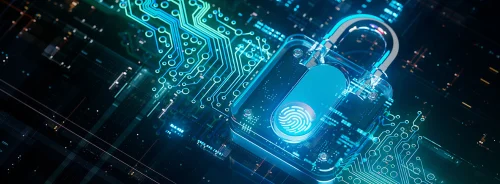;
Healthcare ;organisations ;operate ;in complex digital ecosystems where data breaches and ransomware can disrupt care, damage ;trust ;and strain finances. Effective ;defence ;depends on ;timely ;detection, fast containment and disciplined recovery, built on clear governance and continuous visibility across clinical and corporate systems. A resilient posture combines technology, ;process ;and people, aligning monitoring with well-rehearsed incident ;management ;so operational impact stays limited when attackers ;attempt ;to move laterally. Placing data protection and service continuity at the ;centre ;of security ;programmes ;helps teams act quickly, document decisions and restore systems safely, keeping focus on patient care even under pressure. ;
;
Anchor Governance in GDPR and NIS2 ;
Strong detection begins with governance that makes data protection and service continuity non-negotiable. The General Data Protection Regulation (GDPR) sets the baseline for handling personal data, clarifying roles for controllers and processors, requiring Records of Processing ;Activities ;and encouraging Data Protection Impact Assessments (DPIAs) where risk is high. These foundations ensure monitoring, logging and incident handling uphold data ;minimisation, purpose ;limitation ;and lawful processing, so security actions do not create new compliance exposures. ;
;
Must Read: ;Modernising Healthcare IT While Closing Security Gaps ;
;
Operational resilience benefits from aligning ;programmes ;with NIS2 obligations for essential and important entities. This drives risk management across assets, suppliers and connected clinical technologies, and ;establishes ;expectations for incident handling and ;timely ;reporting to competent authorities. Incorporating guidance from the European Union Agency for Cybersecurity (ENISA) provides practical benchmarks for baseline controls, threat ;monitoring ;and response coordination, while using Computer Security Incident Response Team (CSIRT) structures clarifies roles, ;escalation ;and decision paths during high-stress events. ;
Medical technologies also require specific attention. The Medical Device Regulation (MDR) and In Vitro Diagnostic Regulation (IVDR) ;emphasise ;cybersecurity by design and post-market vigilance, which reinforces asset ;inventories, patch planning and coordinated vulnerability disclosure. Segmenting networks that host Internet of Medical Things (IoMT) devices ;reduces ;blast radius and integrating device telemetry into central monitoring improves detection of anomalous activity without interrupting care. ;
;
Detect and Contain Fast ;with ;Layered Controls ;
Speed is decisive once an attacker gains access. Continuous visibility across endpoints, networks, ;identities ;and third-party connections allows teams to spot unusual logins, privilege changes or data movements that may ;indicate ;compromise. Endpoint Detection and Response (EDR) supplies host-level context, Security Information and Event Management (SIEM) correlates ;events at ;scale, Network Detection and Response (NDR) and Intrusion Detection Systems (IDS) expose suspicious traffic ;patterns, and ;connected medical device monitoring closes gaps around clinical assets. Tuning detections to the environment ;reduces ;alert fatigue and surfaces what matters. ;
;
Containment should be triggered quickly when signals cross predetermined thresholds. A Zero Trust architecture limits lateral movement by enforcing least-privilege access and continuous verification across users, ;devices ;and services. Security Orchestration, Automation and Response (SOAR) coordinates actions across tools, enabling rapid isolation of endpoints, suspension of compromised ;accounts ;and blocking of malicious ;communications ;while preserving forensic artefacts. Data segmentation and well-defined break-glass procedures help keep essential services running during containment, supporting clinical continuity without undermining security controls. ;
;
People ;remain ;central to rapid response. Staff training beyond the security team reduces risky ;behaviour ;and improves early reporting of suspicious activity. Clear communication channels between technical responders, data protection ;leads ;and operational managers ensure that containment steps, evidence collection and notifications ;proceed ;in parallel. Documentation ;throughout ;detection and containment supports accountability, enables regulatory reporting within statutory ;timelines ;and provides the material needed for lessons learned after recovery. ;
;
Practise ;Incident Response and Assure Recovery ;
Preparation ;determines ;whether disruption ;remains ;localised ;or cascades. Incident Response (IR) and Disaster Recovery (DR) plans should be current, role-based ;and exercised regularly. Tabletop sessions and technical drills test decision points, ;communications ;and hand-offs, so responders act confidently when time is tight. Purple team exercises that pit detection capabilities against realistic attacker ;behaviours ;reveal blind spots across logging, ;analytics ;and access controls, guiding improvements before a crisis. ;
;
Recovery depends on trustworthy data and repeatable procedures. Offline, immutable backups of critical systems and datasets should be taken from known-clean states and tested routinely to verify restorability. After containment, thorough eradication includes patching exploited ;weaknesses, rotating credentials, ;validating ;configurations ;and restoring from verified backups. Post-incident analysis then feeds back into governance, ;detections ;and training, closing gaps that adversaries ;attempted ;to exploit. Where vendors and managed service providers are involved, contracts and runbooks should define ;evidence ;handling, escalation and service-level expectations to avoid delays and ambiguity. ;
;
Sustained vigilance is essential as tactics evolve. Ransomware groups recompile payloads, shift to multi-channel ;pressure ;and target suppliers to reach healthcare environments indirectly. Continuous monitoring, segmented ;architectures, modern identity ;controls ;and 24/7 oversight form the operational baseline. Aligning these measures with GDPR requirements for safeguarding personal data, and with NIS2 expectations for risk management and reporting, ensures that security actions support both legal duties and service continuity. ;
;
Reducing risk from data breaches and ransomware requires integrated governance, rapid ;detection ;and ;practised ;recovery. ;Centring ;programmes ;on GDPR and NIS2, applying ENISA guidance and using CSIRT structures create clarity on roles, reporting and decision-making. Layered controls such as EDR, SIEM, NDR, IDS, SOAR and Zero Trust principles limit attacker movement and enable swift containment, while segmentation and offline, tested backups support resilient restoration. By rehearsing procedures and strengthening visibility across clinical and supplier ecosystems, ;organisations ;can protect patient care, uphold data protection ;obligations ;and return to normal operations with confidence. ;
;
Source: ;Healthcare IT Today ;
Image Credit: ;iStock







